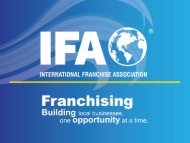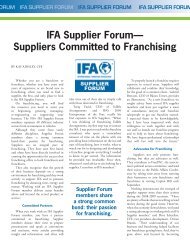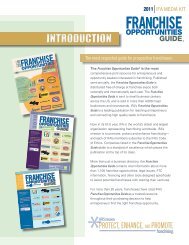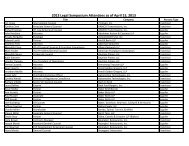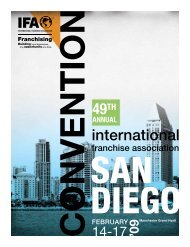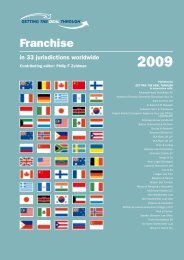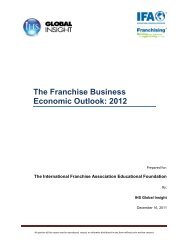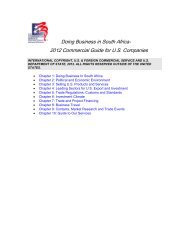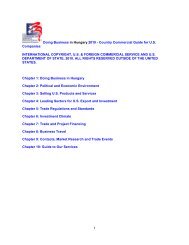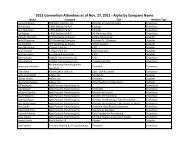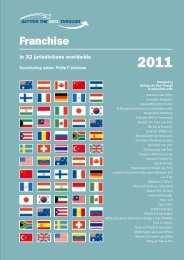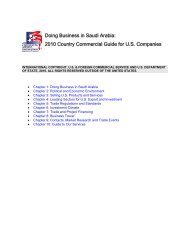Doing Business In - International Franchise Association
Doing Business In - International Franchise Association
Doing Business In - International Franchise Association
You also want an ePaper? Increase the reach of your titles
YUMPU automatically turns print PDFs into web optimized ePapers that Google loves.
Copyright<br />
The EU’s legislative framework for copyright protection consists of a series of Directives<br />
covering areas such as the legal protection of computer programs, the duration of<br />
protection of authors’ rights and neighboring rights, and the legal protection of<br />
databases. Almost all Member States have fully implemented the rules into national law;<br />
and the Commission is now focusing on ensuring that the framework is enforced<br />
accurately and consistently across the EU.<br />
Key Link: http://ec.europa.eu/internal_market/copyright/documents/documents_en.htm<br />
The on-line copyright Directive (2001/29/EC) addresses the problem of protecting rights<br />
holders in the online environment while protecting the interests of users, ISPs and<br />
hardware manufacturers. It guarantees authors’ exclusive reproduction rights with a<br />
single mandatory exception for technical copies (to allow caching), and an exhaustive list<br />
of other exceptions that individual Member States can select and include in national<br />
legislation. This list is meant to reflect different cultural and legal traditions, and includes<br />
private copying "on condition right holders receive fair compensation."<br />
Key Link: http://eurlex.europa.eu/pri/en/oj/dat/2001/l_167/l_16720010622en00100019.pdf<br />
Patents<br />
EU countries have a "first to file" approach to patent applications, as compared to the<br />
"first to invent" system currently followed in the United States. This makes early filing a<br />
top priority for innovative companies. Unfortunately, it is not yet possible to file for a<br />
single EU-wide patent that would be administered and enforced like the Community<br />
Trademark though negotiations are progressing (see below). For the moment, the most<br />
effective way for a company to secure a patent across a range of EU national markets is<br />
to use the services of the European Patent Office (EPO) in Munich. It offers a one-stopshop<br />
that enables rights holders to get a bundle of national patents using a single<br />
application. However, these national patents still have to be validated, maintained and<br />
litigated separately in each Member State.<br />
Key Links: http://ec.europa.eu/internal_market/indprop/patent/index_en.htm<br />
http://www.european-patent-office.org<br />
Trademarks<br />
The EU-wide Community Trademark (CTM) can be obtained via a single language<br />
application to the Office of Harmonization in the <strong>In</strong>ternal Market (OHIM) in Alicante,<br />
Spain. It lasts ten years and is renewable indefinitely. For companies looking to protect<br />
trademarks in three or more EU countries the CTM is a more cost effective option than<br />
registering separate national trademarks.<br />
On October 1, 2004, the European Commission (EC) acceded to the World <strong>In</strong>tellectual<br />
Property Organization (WIPO) Madrid Protocol. The accession of the EC to the Madrid<br />
Protocol establishes a link between the Madrid Protocol system, administered by WIPO,




